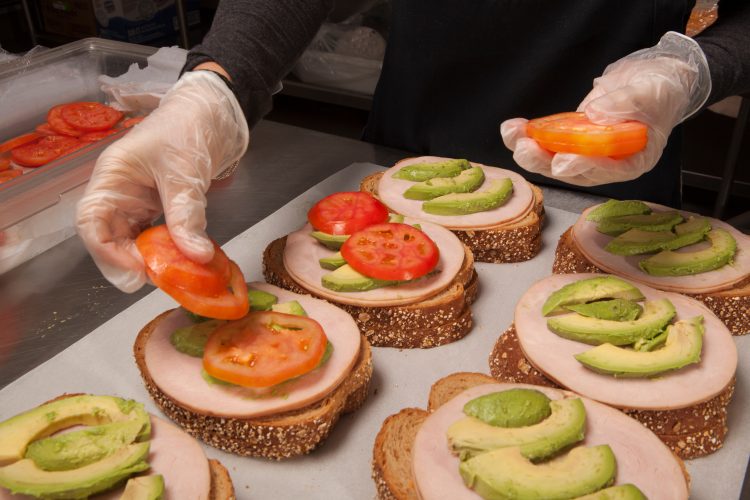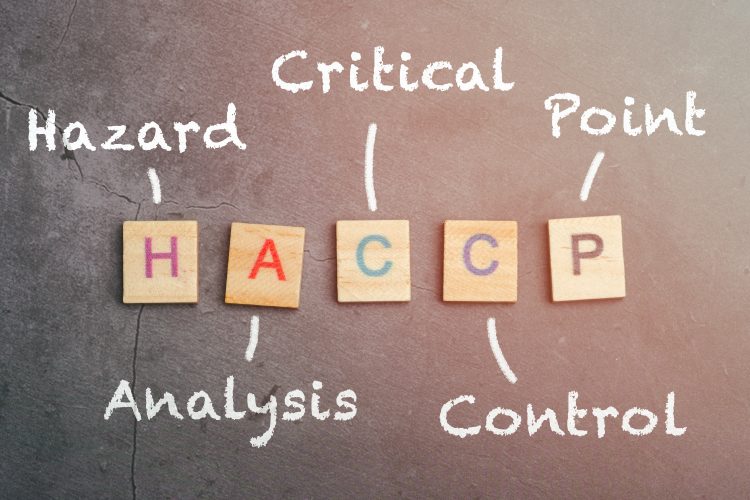HACCP and your food business
- Like
- Digg
- Del
- Tumblr
- VKontakte
- Buffer
- Love This
- Odnoklassniki
- Meneame
- Blogger
- Amazon
- Yahoo Mail
- Gmail
- AOL
- Newsvine
- HackerNews
- Evernote
- MySpace
- Mail.ru
- Viadeo
- Line
- Comments
- Yummly
- SMS
- Viber
- Telegram
- Subscribe
- Skype
- Facebook Messenger
- Kakao
- LiveJournal
- Yammer
- Edgar
- Fintel
- Mix
- Instapaper
- Copy Link
Posted: 24 June 2019 | Dr Lisa O’Connor (Food Safety Authority of Ireland) | 4 comments
Dr Lisa O’Connor, Chief Specialist in Biological Safety at the Food Safety Authority of Ireland (FSAI), explains the term HACCP (Hazard Analysis and Critical Control Point), which can confuse people but essentially refers to procedures that must be in place to ensure the food you produce is safe to eat.


A food safety management system based on the principles of HACCP is a systematic approach to identifying and controlling hazards, whether microbiological, chemical or physical, that could pose a threat to the production of safe food. In simple terms, it involves identifying what could go wrong in a food business, planning how to prevent it and checking that the plan isxbeing followed.
In Europe it is a legal requirement for all food businesses to have a food safety management system based on the principles of HACCP. Meeting this requirement can be achieved in several ways, depending on what best suits your food business. You may:
- Develop a HACCP system by applying the principles of HACCP
- Follow a relevant industry guide to good practice, recognised by the national authority, in which the HACCP principles have been applied in its development.
In the case of a food business undertaking simple food operations (eg, service of pre-packaged food) the correct implementation of the legal hygiene requirements (sometimes referred to as prerequisites) may be enough to control all hazards. Such prerequisites include:
- Cleaning and sanitation
- Maintenance
- Personnel hygiene and training
- Pest control
- Plant and equipment
- Premises and structure
- Services (compressed air, ice, steam, ventilation, water, etc.)
- Storage, distribution and transport
- Waste management
- Zoning (physical separation of activities to prevent potential food contamination).
The foundation of a food safety management system is having effective standards of good hygiene practice (prerequisites) in place. In general, most hazards are controlled by the prerequisites.
HACCP is used to identify and control key steps in the food business that are critical in ensuring the preparation of safe food.
When developing a HACCP system, businesses must carry out the following:
- Ensure staff involved have a basic understanding of HACCP. If it is necessary to hire a HACCP consultant, businesses should ensure staff understand how the system works and are suitably trained to ensure effective implementation.
- Depending on the size of the business, assemble staff into a team, with ateam leader to lead the design and implementation of HACCP. In the case of a small business, one person may develop the HACCP system. The team should have a good knowledge of your business.
- Describe your product(s) and the intended use by consumers and then, depending on the size of the business, draw up a flow diagram to show each step of your operation. Walk through your operation to confirm that the flow diagram is correct and check that it covers all the foods your business produces.
There are seven principles of HACCP. A food safety management system based on these seven principles will enable hazards to be identified and controlled before they threaten the safety of your food and the health of your customers.
1. HACCP requires identifying the hazards
Consider each step (eg, purchasing, delivery, storage, preparation, cooking, chilling, etc) in your 

In recent years, due to the requirement to provide accurate information on food allergens for both pre-packaged food and food sold loose, allergens are being treated by businesses as a fourth hazard category, which they need to identify and control.
2. Determine the critical control points (CCPs)
Once hazards have been identified, you must ensure that they are adequately controlled. As aforementioned, most hazards are controlled by ensuring that you are operating an effective prerequisite programme, ie, good hygiene practices.
A critical control point (commonly referred to as ‘CCP’) is a step where a control procedure must be applied to prevent a food safety hazard occurring or reduce it to a safe level. It is the last chance to control a hazard before the food is sold. For example, thorough cooking of beef burgers will kill harmful bacteria that may be present in the centre or thickest part of the burger.
3. Establish critical limit(s)
Set limits to enable you to identify when a CCP is out of control; eg, the temperature at the centre of a beef burger following cooking must reach a minimum of 70°C for two minutes, or equivalent (ie, 75°C instantaneously).
4. Establish a system to monitor control of the CCP
When CCPs and critical limits have been identified it is important to establish a way to monitor and record what is happening at each CCP. Typically, monitoring will involve measuring parameters such as temperature and time. However, the method and frequency with which you monitor will depend on the size and nature of your food business.
5. Establish the corrective action to be taken when monitoring indicates that a particular CCP is not under control
When monitoring indicates that a CCP is not under control, corrective action must be taken (eg, the temperature of refrigerated cooked meat rises to >10°C for over 24 hours due to a technical fault in the refrigerator). The cooked meat is disposed of and the refrigerator is repaired to maintain new cooked meat supplies at the correct temperature.
6. Establish procedures for verification to confirm the HACCP system is working effectively
Review the system periodically and whenever you make changes to your operation; for instance, when replacing an oven verify that the time/ temperature settings in the new oven achieve the minimum safe cooking temperature for a particular dish by probing the food.
7. Establish documentation concerning all procedures and records appropriate to these principles and their application
To ensure successful implementation of a HACCP system, appropriate documentation and records must be kept and be readily available; eg, cooking temperatures. It is unrealistic to operate a HACCP system or to demonstrate compliance with current legislation without providing evidence such as written records. The simplicity of the record keeping will very much depend on the nature and size of the business. The aim should be to maintain control without generating excessive paperwork.
A HACCP system provides food businesses with a cost-effective approach to control the safety of food from ingredients through production, storage and distribution, to sale and service to the final consumer. The preventive approach of HACCP not only improves food safety management, but also complements other quality management systems. While HACCP is a legal requirement, it should not be considered a legal burden, but rather an insurance policy.
About the author
DR LISA O’CONNOR has been working with the Food Safety Authority of Ireland (FSAI) for over 20 years in various roles. She currently leads the team responsible for producing guidance on microbial food safety issues, conducting microbial risk assessments and providing scientific support to the FSAI’s Biological Safety Sub-committee. She has been involved in producing national guidance on HACCP, negotiating European guidance and in coordinating a national strategy to improve HACCP compliance levels.










Excellent article!!!
Thank you for publishing this article; I learned more about HACCP
Great article, got to know more about HACCP,Thank you for posting.
Hazard Analysis and Critical Control Points (HACCP) is the most internationally recognised system based on production of safe food from a preventative approach for preventing microbiological, chemical and physical contamination along the food supply chain.
Nice article!
Thank you for sharing this article which is really interesting to know about HACCP.
Great article, I definitely follow this. Thanks for sharing.